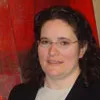
Cleaning Fundamentals for the Pharmaceutical Industry
Clean-in-place design integration and cleaning chemical selection are vital components of every pharmaceutical manufacturing process; indeed, all pharmaceutical companies employ some type of cleaning application every day. As a result, FDA inspections of cleaning processes have been occurring with greater frequency in today's highly regulated manufacturing environment. To achieve effective and easily validated cleaning methods is to gain a thorough understanding of cleaning methods. This online course will provide an overview of clean-in-place (CIP) systems including design, integration, and selection of cleaning chemicals. Participants will discuss engineering concepts, principles, and integration of CIP systems, clean-out-of-place (COP) systems, or immersion parts washers. While there will be some discussion of manual cleaning practices, cleaning principles will be primarily introduced as they relate to the dynamics of CIP and COP technologies, with an emphasis on selecting the right cleaning chemistries for specific soil residues. Additional topics covered include a CIP technology review including examples of various pharmaceutical processes that illustrate how CIP technologies and hygienic design can improve cleanability. Other topics for discussion include CIP spray device selection criteria and dynamics of integrating CIP process piping into a pharmaceutical process.
Course Modules/Learning Objectives
- Module 1: Introduction to Cleaning Basics
- Review cleaning basics.
- Discuss GMP cleaning requirements.
- Describe cleaning methods.
- Provide an understanding of the cleaning process.
- Describe manual cleaning tools and practices.
- Module 2: Cabinet Washers, Clean-out-of Place (COP), and Clean-in-Place (CIP) Technologies
- Discuss cabinet washers and typical washer systems.
- Define clean-out-of-place (COP), the typical COP sequence, and COP systems.
- Explore the evolution and function of clean-in-place (CIP) technologies.
- Describe CIP technologies and automated cleaning processes.
- Provide an understanding of the typical CIP cleaning cycle.
- Identify the types and design considerations of CIP systems.
- Discuss design advantages and disadvantages of different CIP systems.
- Module 3: Clean-in-place (CIP) Design Considerations
- Describe design considerations for CIP systems.
- Identify operational requirements for a CIP system.
- Module 4: Spray Devices
- Describe and compare static and dynamic CIP spray devices.
- Describe the principles of operation for static and dynamic CIP devices.
- Discuss the advantages and disadvantages of static spray devices versus dynamic spray CIP devices.
- Identify selection criteria for CIP system devices, including BPE Guidelines, and provide a look at working spray devices.
- Module 5: Integrating CIP
- Describe integrating CIP into the cleaning process.
- Describe the importance of good sanitary piping.
- Identify factors affecting CIP flow rates and CIP of pumps.
- Module 6: Formulated Cleaning Agents
- Identify proper cleaning chemistries.
- Identify cleaning sources.
- Describe cleaning chemical categories.
- Explore selection of chemistries through evaluation.
- Explore the validation process of formulated cleaning agents.
Interactive Course includes:
- A downloadable presentation for note-taking.
- Engaging graphics.
- Reference materials and links to regulatory information.
- Assessments to measure your comprehension.
- The ability to start and stop at any time, beginning where you left off.
CEUs are provided once you achieve an 80% passing grade and complete the evaluation.
Attendance suggested for
- Quality assurance and quality control specialists, manufacturing supervisors, technical support personnel, engineers, and all levels of management.
- Traditional Pharma; Biotech/Biosimilars; CMOs / CROs; Suppliers; Service Providers; Generics; Academia; and Regulatory agencies.
Instructor

